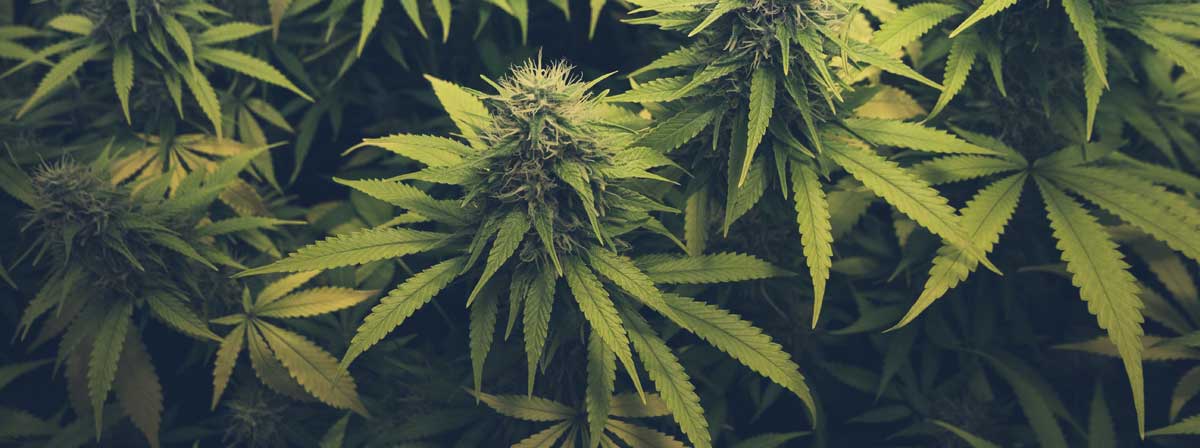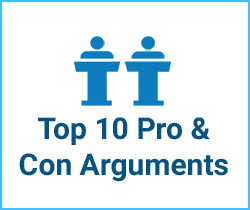History of Medical Marijuana
The use of medical marijuana dates to ancient civilizations, though historians are undecided about whether the first medical use of cannabis was in China, where the plant is indigenous.
Archaeologists unearthed traces of cannabis with high levels of THC (the main psychoactive component of cannabis) in wooden bowls dating to 500 BCE in the Jirzankal Cemetery in China, marking the earliest instance of marijuana use found to date. Read more history…
Pro & Con Arguments
Pro 1
Marijuana is beneficial as a medicine with fewer risks than opioids and other prescribed drugs.
Medical marijuana is most commonly used for pain in the US. “While marijuana isn’t strong enough for severe pain (for example, post-surgical pain or a broken bone), it is quite effective for the chronic pain that plagues millions of Americans, especially as they age,” explains primary care physician and cannabis specialist, Peter Grinspoon. [22]
Marijuana also offers pain relief for patients who are suffering the pain of multiple sclerosis or general nerve pain. In contrast with marijuana, the commonly prescribed drugs for these ailments are often heavily sedating, which can impair quality of life. [22]
Marijuana, particularly CBD (the main nonpsychoactive component in cannabis), has also shown potential to treat high blood pressure, inflammation and related neuropathic pain, anxiety disorders (including generalized anxiety, panic, social anxiety, obsessive-compulsive, and post-traumatic stress disorders), gastrointestinal (GI) disorders (including irritable bowel syndrome (IBS), inflammatory bowel disease (IBD), Crohn’s, and ulcerative colitis), epilepsy and other seizure syndromes, as well as the prevention of drug and alcohol addiction relapse and alleviation of the effects of chemotherapy. [23] [24] [25] [26] [27] [28] [29] [30]
“Medical marijuana” also includes drugs chemically derived from marijuana, rather than only preparations of the plant itself. According to the National Institutes of Health, “THC itself has proven medical benefits in particular formulations.” [31]
In the US, the FDA approved THC-based Marinol and Cesamet to treat nausea in chemotherapy patients and for appetite stimulation in AIDS patients. Also FDA-approved is the CBD-based Epidiolex, which treats Dravet and Lennox-Gastaut syndromes in children. Sativex, a THC- and CBD-based drug for multiple sclerosis (MS) patients, is approved for use in the UK, Canada, and some European countries. [31]
The bottom line: marijuana has been used as medicine for thousands of years. The drug should be legalized and studied to reap the full benefits.
Read More
Pro 2
Marijuana is safer than some legal drugs and preferred by patients.
Many patients prefer marijuana for pain because it is less addictive and carries less risk of overdose than opiates. [22] [32]
Three researchers from the University of British Columbia BC Centre on Substance Use in Vancouver, argue: “Although cannabis use is neither risk free nor a panacea, the risks it poses of physical dependence and accidental overdose compared with opioid use are substantially lower—indeed, fatal overdose with cannabis has never been documented and is thought to be impossible. Especially in the era of the opioid overdose crisis, the common sequelae [results] of opioid use disorder (e.g., fatal overdose, acquisition or transmission of blood-borne diseases) are hardly comparable to those of cannabis use disorder at either individual or population levels. The lower relative risks associated with cannabis are reflected in substantially lower rates of cannabis-associated morbidity, mortality and societal costs compared with opioids in Canada, despite much higher levels of exposure. Simply put: it is not perception that cannabis has fewer relative harms than opioids; it is evidence.” [33]
Marijuana can also be used instead of NSAIDs (Advil and Aleve, for example) if someone has kidney problems, ulcers, or gastroesophageal reflux disease (GERD), making it potentially safer for people with those conditions. [22]
Studies also show many patients prefer to use marijuana instead of lorazepam, clonazepam, and alprazolam for anxiety disorders and instead of sertraline, trazodone, or bupropion for depression. [34]
Read More
Pro 3
Americans have agreed for decades that medical marijuana should be legal.
Widespread American approval of marijuana is seen in the many states that have legalized its use. Since California legalized medical marijuana in 1996, 36 states and DC have followed suit as of December 2022. [19]
Of those living in the United States, 83.5% live in a state (or DC) with legal medical marijuana. Only 16.5% live in one of the 13 states without legal medical marijuana. [19] [45]
Additionally, polls and elections for more than 20 years have shown Americans united on the legalization of medical marijuana. [35]
Of 96 polls and elections collected by ProCon between 2000 and 2022, only three had less than 50% support for legalizing medical marijuana. Two were elections in South Dakota (Nov. 2006 and Nov. 2010); however, South Dakota legalized medical marijuana in 2020. [35]
The third was a poll of 960 physicians nationwide by researchers at Rhode Island Hospital for presentation to the American Society of Addiction Medicine in Apr. 2001. The doctors were split fairly evenly: 36% believed they should be able to legally prescribe medical marijuana, 26% were unsure, and 38% were against the practice. [35]
However, a 2021 study found 70.7% of physicians at the 2019 American College of Emergency Physicians’ Annual Conference “believed that cannabis has medical value,” and, further, that 79.6% of the physicians would choose marijuana over opioids if cannabis were found to be more effective, and 52.3% would choose marijuana if it were found to be equally as effective as opioids. [36]
Approval of legalization crosses party lines as well as age and race demographics in what Pew Research Center deemed “overwhelming support” in an Apr. 16, 2021, poll. Among Democrats, 95% believed medical marijuana should be legal, joined by 87% of Republicans. [21]
92% of white Americans would legalize medical marijuana, along with 91% of Black Americans, 89% of Asian Americans, and 87% of Hispanic Americans. [21]
The largest support among age groups for medical marijuana comes from those aged 18-29 (94%) and 65-74 (93%). However, no age group dropped below 85% approval (those aged 75+). [21]
Medical marijuana enjoys so much support among Americans that many now approve of the legalization of recreational marijuana as well. [21]
Read More
Con 1
Medical legalization of marijuana makes a drug that is dangerous to children, teenagers, and young adults more readily available.
Whether medical marijuana is legalized for everyone or only adults, legalization provides everyone more access to the drug. [38]
“An ‘unintended consequence’ of marijuana legalization is the impact on the pediatric population. From prenatal exposure to unintentional childhood exposures, through concerns of adolescence abuse and marijuana use for medicinal indications in children, marijuana exposure can affect pediatric patients at every stage in childhood. Regardless of the stage or reason of exposure, concerns exist about short-term and long-term consequences in a child’s physical and mental health,” argues Sam Wang, Associate Professor of Pediatrics-Emergency Medicine at the University of Colorado School of Medicine. [39]
Adult use of marijuana, medical or otherwise, during pregnancy can cause child development problems during and after pregnancy. If exposed to marijuana before birth, children may be more susceptible to “increased hyperactivity, impulsivity, and inattention symptoms” and problems with “visual-motor coordination, processing speed, [and] visual memory.” [31] [39] [40] [41]
Any drug at home poses potential risks for children, but medical marijuana edibles look like regular treats (gummy bears, hard candies, and chocolate bars, to name a few), yet are infused with potent marijuana. And, unlike a regular treat, a marijuana infused edibles should be carefully portioned for the correct dosage. A child accidentally eating an entire marijuana candy bar could overdose and end up in serious medical distress. Within just five years, accidental cannabis exposures in kids aged one to six who ate edibles increased 1,375% from 207 cases in 2017 to 3,054 in 2021. [39] [42] [47]
The danger does not decrease as children age. According to the National Institutes of Health, “heavy chronic marijuana consumption in young people under the age of 25 has been associated with decreased cognitive and executive function.” Researchers are not yet certain whether the damage is permanent, but one New Zealand study found teens who smoked marijuana heavily and developed a marijuana use disorder lost 8 IQ points on average between ages 13 and 38. [40]
Read More
Con 2
Marijuana has dangerous side effects.
The National Institutes of Health offers a litany of negative mental side effects, including “altered senses (for example, seeing brighter colors), altered sense of time, changes in mood, impaired body movement, difficulty with thinking and problem-solving, impaired memory, hallucinations (when taken in high doses), delusions (when taken in high doses), [and] psychosis (risk is highest with regular use of high potency marijuana).” [40]
Physical side effects include breathing problems such as “daily cough and phlegm, more frequent lung illness, and a higher risk of lung infections,” an increased heart rate (which, in turn, increases the risk of heart attack), and Cannabinoid Hyperemesis Syndrome (“regular cycles of severe nausea, vomiting, and dehydration, sometimes requiring emergency medical attention”). [40]
Further, between 9% and 30% of people who use marijuana are at risk of developing a substance use disorder. And, with THC levels steadily increasing, the potential for addiction only grows as users need more and more marijuana to feel the desired effects. [40] [43]
Colorado legalized medical marijuana in 2000 and recreational marijuana in 2012. The state saw a 40% increase in cannabis-related emergency room (ER) visits between 2012 and 2014. Colorado hospitals have seen a 50% increase in marijuana-related cyclic vomiting syndrome. Burn admissions also increased. [44]
However, these are the known side effects. Because the drug has not been studied as thoroughly as other drugs, there may be unexpected consequences to medical marijuana use. [44]
Read More
Con 3
Recreational marijuana only should be decriminalized while researchers properly study the medicinal effects of the drug.
Decriminalizing recreational marijuana means possession of a small amount for personal use does not carry the risk of arrest, jail time, or a criminal record, but instead are ticketed like a minor traffic violation, according to NORML (National Organization for the Reform of Marijuana Laws), which reports 26 states have partially or fully decriminalized recreational marijuana. [46]
However, the medical benefits and safety of marijuana have not been studied enough to determine if the benefits outweigh the risks associated with the drug. Additional study also allows more specific-use analysis (for example, does a particular marijuana derivative help a particular ailment, and does marijuana treat a condition not yet associated with the drug?). [38]
Sarah C. Hull, cardiologist at Yale School of Medicine, explains why we should not rush into legalization of medical marijuana: “Decriminalization of marijuana will create significant opportunities to conduct this research, but common-sense regulation based on science must be implemented simultaneously to create an ethical policy framework. This should aim to promote public health through comprehensive education programs and protection of vulnerable populations such as adolescents, while recognizing the right of autonomous adults to make decisions about their own health but not to act in a way that might compromise the health of others. [38]
Hull argues further that “significant criminal penalties” should not be attached to adult possession or use of marijuana as such punishments have “entrench[ed] systemic racism.” [38]
She concludes, “There is substantial need for more research to guide specific policy development going forward, and in the meantime, recreational use (though not medicinal use) should be generously taxed to fund research efforts as well as addiction treatment in order to enhance benefits to society.” [38]
As with any drug, marijuana should be thoroughly studied for medical applications before being widely used as medicine. “Once we understand on the brain level what effect it is having on cognition, then we can see how it can be applied for all sorts of purposes, but first we need to know exactly what it’s doing. If it’s going to be introduced to society in a big way, we need to know what the potential harms and benefits are,” argues Earl Miller, cognitive neuroscientist at the Massachusetts Institute of Technology’s Picower Institute for Learning and Memory. [44]
Read More




